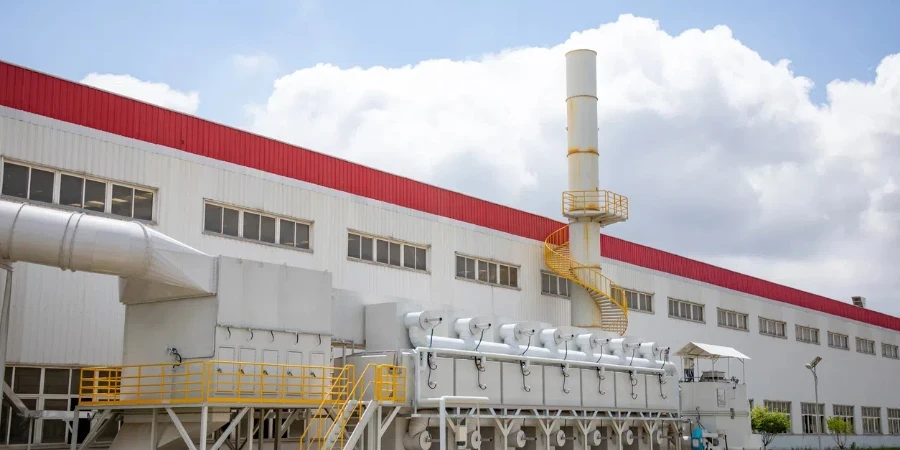In 2025, the market for cyclone dust collectors continues to expand, driven by stringent environmental regulations and the need for cleaner industrial air. This article provides an in-depth analysis of key factors to consider when selecting a cyclone dust collector, including performance, design, compatibility, safety standards, and cost. It aims to assist professional buyers in making informed decisions that align with their business requirements and industry standards.
Table of Contents:
-Cyclone Dust Collector Market Overview
-Detailed Introduction and Analysis of Cyclone Dust Collector Market
-Innovations and Trends in Cyclone Dust Collectors
-Key Factors When Selecting a Cyclone Dust Collector
-Understanding the Different Types of Cyclone Dust Collectors
-Latest Technological Advancements in Cyclone Dust Collectors
-Practical Applications and Industry Use Cases
-Final Thoughts
Cyclone Dust Collector Market Overview
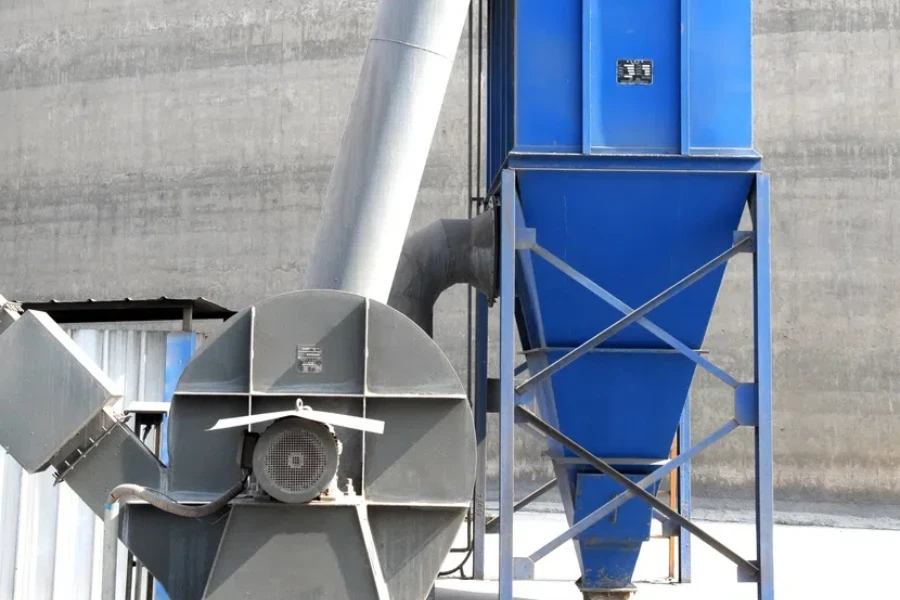
The global dust collectors market, including cyclone dust collectors, was valued at USD 8.73 billion in 2024 and is projected to reach USD 11.92 billion by 2030, with a compound annual growth rate (CAGR) of 5.0%. Cyclone dust collectors are widely used in various industries for their efficiency in removing large particulate matter from industrial air streams. The market is driven by stringent environmental regulations and the need for improved air quality in industrial settings.
Cyclone dust collectors are particularly valued in industries such as manufacturing, metalworking, pharmaceuticals, and agriculture. These systems help comply with health and safety regulations, mitigate workplace hazards, and improve respiratory health for workers. The market’s growth is also fueled by the expanding industrial sector, rapid urbanization, and increasing environmental awareness.
Regionally, North America and Asia-Pacific are the leading markets for cyclone dust collectors. North America’s market growth is propelled by rigorous environmental regulations and the presence of major industrial players. Meanwhile, Asia-Pacific is expected to be the fastest-growing region due to rapid industrialization and urbanization, especially in countries like China and India.
Detailed Introduction and Analysis of Cyclone Dust Collector Market

Cyclone dust collectors separate large dust particles from industrial airflow using centrifugal force. These systems are efficient in handling large volumes of dust-laden air and are preferred for their low maintenance and operational costs. Key performance benchmarks include high collection efficiency, low pressure drop, and durability.
The market dynamics for cyclone dust collectors are influenced by several factors. The increasing adoption of Industry 4.0 and advancements in filtration technologies drive innovation in this sector. For instance, integrating IoT technologies in dust collection systems enables real-time monitoring and predictive maintenance, enhancing operational efficiency and reducing downtime. Additionally, the development of more compact and versatile systems caters to the needs of small and medium-sized enterprises.
Economic influences such as the rising cost of raw materials and energy also impact the market. Companies focus on enhancing the energy efficiency of cyclone dust collectors to reduce operational costs. Moreover, consumer behavior is shifting towards environmentally sustainable solutions, prompting manufacturers to develop eco-friendly dust collection systems.
Distribution channels for cyclone dust collectors include direct sales, distributors, and online platforms. Direct sales remain the dominant channel, especially for large-scale industrial applications. However, the growing trend of e-commerce is enabling manufacturers to reach a wider customer base, particularly in emerging markets.
Innovations and Trends in Cyclone Dust Collectors
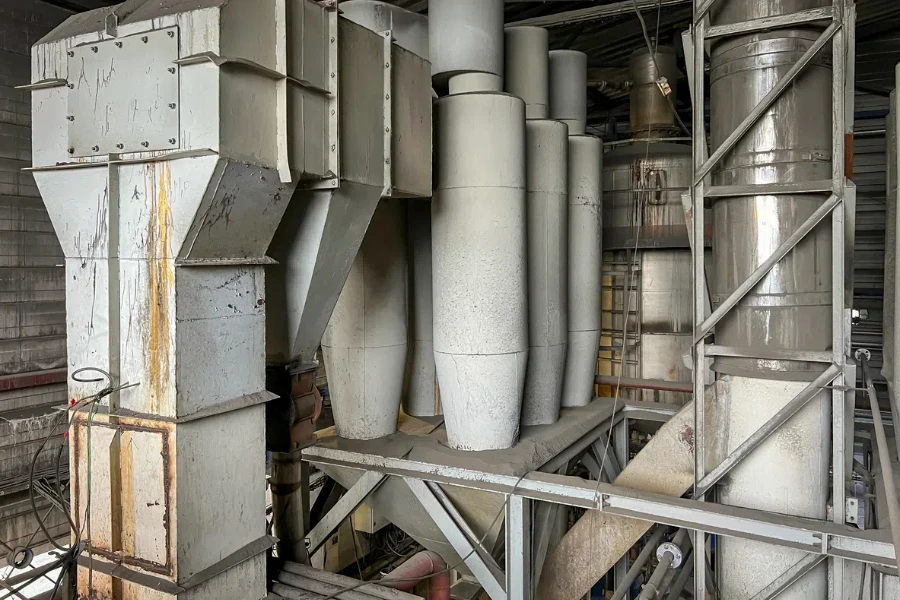
Recent innovations in cyclone dust collectors include high-efficiency designs that can achieve particulate collection efficiencies of up to 99.9%. These advanced designs handle finer particles, making them suitable for applications in the pharmaceutical and food processing industries. Additionally, using advanced materials such as wear-resistant alloys and ceramics enhances the durability and lifespan of cyclone dust collectors.
Digitalization plays a significant role in the evolution of cyclone dust collectors. The integration of smart sensors and IoT connectivity enables real-time monitoring of system performance and air quality. This allows for predictive maintenance, reducing unexpected downtime and maintenance costs. Moreover, the data collected from these systems can optimize operational parameters and improve overall efficiency.
Increasing awareness of occupational health and safety also influences the market. Companies invest in advanced dust collection systems to ensure a safe working environment and comply with stringent regulatory standards. This is particularly important in industries where workers are exposed to hazardous dust particles, such as metalworking and construction.
Customer pain points in the cyclone dust collector market include high initial installation costs and the complexity of retrofitting existing industrial systems. To address these issues, manufacturers are developing modular and easy-to-install systems that can be easily integrated into existing setups. Additionally, offering comprehensive after-sales services and maintenance support can help alleviate concerns related to system upkeep.
In terms of brand positioning, companies differentiate themselves by focusing on product quality, technological innovation, and customer service. Developing strong partnerships with distributors and industry players can also enhance market reach and brand visibility. Furthermore, targeting niche markets such as small-scale industries and specialized applications can provide new growth opportunities.
Overall, the cyclone dust collector market is poised for significant growth, driven by technological advancements, regulatory pressures, and increasing demand for efficient and sustainable dust collection solutions. By aligning product offerings with evolving customer needs and market trends, companies can enhance their competitiveness and capitalize on emerging opportunities.
Key Factors When Selecting a Cyclone Dust Collector
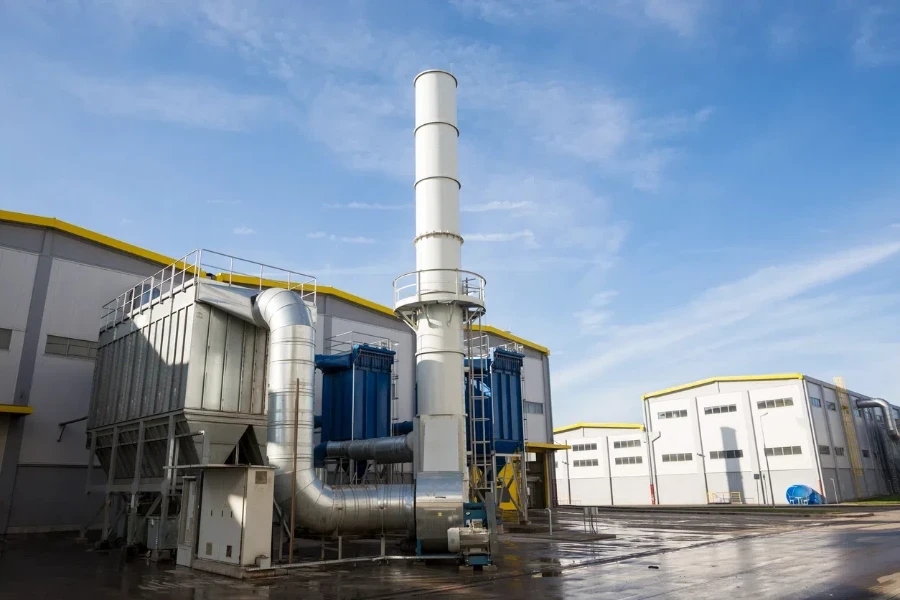
Performance and Efficiency
Performance and efficiency are crucial when selecting a cyclone dust collector. The performance depends on its ability to handle various particle sizes and its overall collection efficiency. Cyclone dust collectors excel at capturing larger particles, typically over 5 micrometers, but their efficiency decreases for smaller particles.
Several factors influence efficiency, including cyclone design, inlet gas velocity, and particulate properties. Higher inlet gas velocity can increase centrifugal force, improving efficiency but may also result in higher pressure drops and increased operating costs.
Consider the airflow or volumetric flow rate, measured in cubic feet per minute (CFM). This determines the air volume the cyclone can handle and relates to the dust collector’s size and power. Cyclone dust collectors with higher airflow capacities suit larger industrial applications, while lower capacities fit smaller workshops.
Design and Construction
The design and construction of a cyclone dust collector significantly impact its performance and durability. Typically constructed from robust materials like steel or stainless steel, these collectors withstand harsh industrial environments and high temperatures. The design often includes a cylindrical body with a conical base to facilitate particulate separation from the air stream.
Critical design aspects include body size and inlet configuration. High-efficiency designs with long bodies and small openings allow high recovery rates at higher pressure drops. Conversely, high-rate designs with shorter bodies and larger openings handle larger volumes but with lower capture rates.
Inlet configurations vary, including tangential, axial, helical, or spiral types, each with its advantages. Tangential inlets are common due to their simplicity and effectiveness in creating a strong vortex. Choose a design that aligns with specific application requirements, including dust type, required efficiency, and available installation space.
Compatibility and Upgrade Potential
Compatibility with existing systems and upgrade potential are essential when selecting a cyclone dust collector. Ensure the dust collector integrates seamlessly with the current system, including ducts, fans, and other components.
Cyclone dust collectors should offer upgrade options, like adding secondary filtration systems such as baghouses or electrostatic precipitators for enhanced particulate removal. This flexibility is crucial for industries anticipating changes in dust collection needs or stricter regulatory requirements.
Modular designs that allow easy disassembly and reconfiguration can be beneficial. These designs enable businesses to adapt their dust collection systems to changing demands without significant downtime or capital investment.
Safety Standards and Certifications
Adherence to safety standards and certifications is critical when selecting a cyclone dust collector. Dust collectors must comply with relevant industrial safety standards to ensure safe operation and minimize dust explosion risks or other hazards.
Key certifications include those from the National Fire Protection Association (NFPA) and the Occupational Safety and Health Administration (OSHA). These organizations provide guidelines for the safe design, installation, and operation of dust collection systems.
Additionally, cyclone dust collectors used in environments with potentially explosive dusts should meet ATEX (Atmosphères Explosibles) directives in the European Union or similar standards in other regions. These certifications ensure the dust collectors are designed to prevent ignition sources and contain potential explosions.
Cost and Budget Considerations
The cost of a cyclone dust collector is a significant factor. Cyclone dust collectors are generally cost-effective due to their simple design and low maintenance requirements. However, the initial capital cost varies depending on size, materials, and additional features.
Balance the capital cost with long-term operating costs, including energy consumption, maintenance, and potential downtime. Higher efficiency designs may have higher initial costs but can result in lower operating costs over time due to reduced energy consumption and maintenance needs.
Consider the total cost of ownership, including purchase price, installation, setup, and necessary modifications to existing systems. Investing in a high-quality cyclone dust collector that meets specific application needs can result in significant cost savings and improved operational efficiency.
Understanding the Different Types of Cyclone Dust Collectors
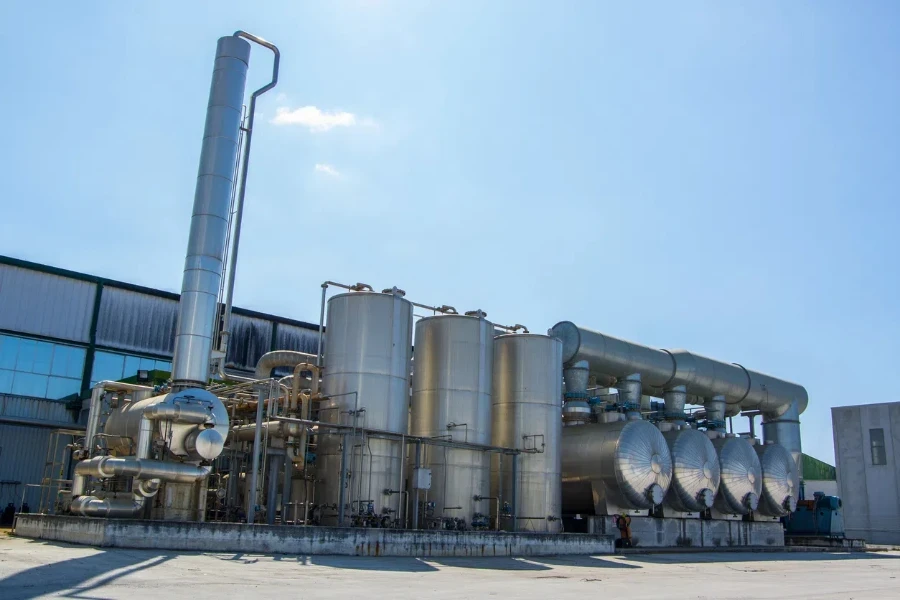
Single-Stage Cyclone Dust Collectors
Single-stage cyclone dust collectors are common in many industrial applications. They operate by drawing dust-laden air into the cyclone, where centrifugal forces separate particulate matter from the air stream. Heavier particles fall into a collection hopper at the base, while cleaned air exits through the top.
Single-stage cyclone dust collectors are typically used as pre-cleaners to reduce the dust load on secondary filtration systems, such as baghouses or cartridge filters. They are effective for capturing larger particles but may not be as efficient for fine particulate matter.
These systems are relatively simple to install and maintain, making them a cost-effective solution for many applications. However, their efficiency can be affected by factors such as airflow rate, particulate size, and cyclone design.
Multi-Stage Cyclone Dust Collectors
Multi-stage cyclone dust collectors incorporate additional filtration stages to enhance particulate removal efficiency. These systems use a series of cyclones arranged in parallel or series to achieve higher collection efficiencies, especially for fine particulate matter.
In a multi-stage system, the first stage captures larger particles, while subsequent stages target progressively smaller particles. This approach significantly improves overall efficiency, making multi-stage cyclones suitable for applications with stringent air quality requirements.
The complexity of multi-stage cyclone dust collectors can result in higher initial costs and increased maintenance requirements. However, improved efficiency and the ability to handle a wider range of particulate sizes can justify the investment, particularly in industries where air quality is critical.
High-Efficiency Cyclone Dust Collectors
High-efficiency cyclone dust collectors maximize particulate removal efficiency while minimizing pressure drops. These systems typically feature long, narrow bodies and small inlet and outlet openings, creating a stronger vortex and enhancing fine particle separation.
High-efficiency cyclones are ideal for applications requiring high levels of particulate removal, such as pharmaceutical manufacturing, chemical processing, and fine powder handling. They can achieve collection efficiencies of over 90% for particles as small as 1 micrometer.
The trade-off for high efficiency is often higher pressure drops, increasing energy consumption and operating costs. However, advancements in cyclone design and materials have mitigated these issues, making high-efficiency cyclones a viable option for many industries.
Latest Technological Advancements in Cyclone Dust Collectors
Advanced Computational Fluid Dynamics (CFD) Modeling
A significant advancement in cyclone dust collector technology is advanced computational fluid dynamics (CFD) modeling. CFD allows engineers to simulate and analyze complex airflow patterns and particulate separation processes within a cyclone, leading to optimized designs with improved efficiency and performance.
Using CFD modeling, manufacturers can fine-tune cyclone geometry, including inlet and outlet configurations, to enhance particulate separation and reduce pressure drops. This technology has enabled the development of cyclones with higher collection efficiencies and lower operating costs.
Integration with IoT and Smart Technologies
The integration of Internet of Things (IoT) and smart technologies into cyclone dust collectors has revolutionized their operation and maintenance. IoT-enabled cyclones can be equipped with sensors monitoring key parameters such as airflow rate, pressure drop, and particulate concentration in real-time.
These sensors provide valuable data for predictive maintenance, allowing operators to identify potential issues before they result in costly downtime. Additionally, IoT-enabled cyclones can connect to centralized monitoring systems, enabling remote management and optimization of dust collection processes.
Use of Advanced Materials
The use of advanced materials in cyclone dust collectors’ construction has improved performance and durability. Materials like stainless steel, high-strength alloys, and advanced composites offer enhanced resistance to abrasion, corrosion, and high temperatures.
These materials extend the cyclone’s lifespan and allow handling more aggressive and abrasive particulate matter. This is particularly important in industries such as mining, metalworking, and chemical processing, where dust can be highly abrasive and corrosive.
Practical Applications and Industry Use Cases
Woodworking and Furniture Manufacturing
In woodworking and furniture manufacturing, cyclone dust collectors are essential for maintaining a clean and safe working environment. These industries generate large volumes of wood dust, posing significant health risks and fire hazards if not properly managed.
Cyclone dust collectors capture wood dust at the source, preventing accumulation in the workspace and improving air quality. They are particularly effective at handling larger particles generated by cutting, sanding, and milling operations.
Metalworking and Welding
The metalworking and welding industries benefit significantly from cyclone dust collectors. These industries produce various dust and fumes, including metal shavings, grinding dust, and welding fumes, which can be harmful to workers and equipment.
Cyclone dust collectors capture these particulates before they spread throughout the facility. They are often used with other filtration systems, such as baghouses or electrostatic precipitators, to achieve higher air quality levels.
Chemical and Pharmaceutical Processing
In chemical and pharmaceutical processing, maintaining high air quality is critical to ensure product purity and protect worker health. These industries often deal with fine powders and hazardous chemicals, making effective dust collection essential.
High-efficiency cyclone dust collectors capture fine particulate matter and prevent contamination of products and workspaces. Their ability to handle a wide range of particulate sizes and chemical compositions makes cyclones a versatile and valuable tool in these industries.
Final Thoughts
Selecting the right cyclone dust collector involves careful consideration of factors such as performance, design, compatibility, safety standards, and cost. Understanding the different types of cyclone dust collectors and their specific applications helps businesses make informed decisions that improve air quality, enhance operational efficiency, and ensure compliance with safety regulations.
As technology advances, cyclone dust collectors are becoming more efficient, reliable, and easier to maintain. By staying informed about the latest developments and industry trends, businesses can leverage these advancements to optimize their dust collection processes and achieve better outcomes.
